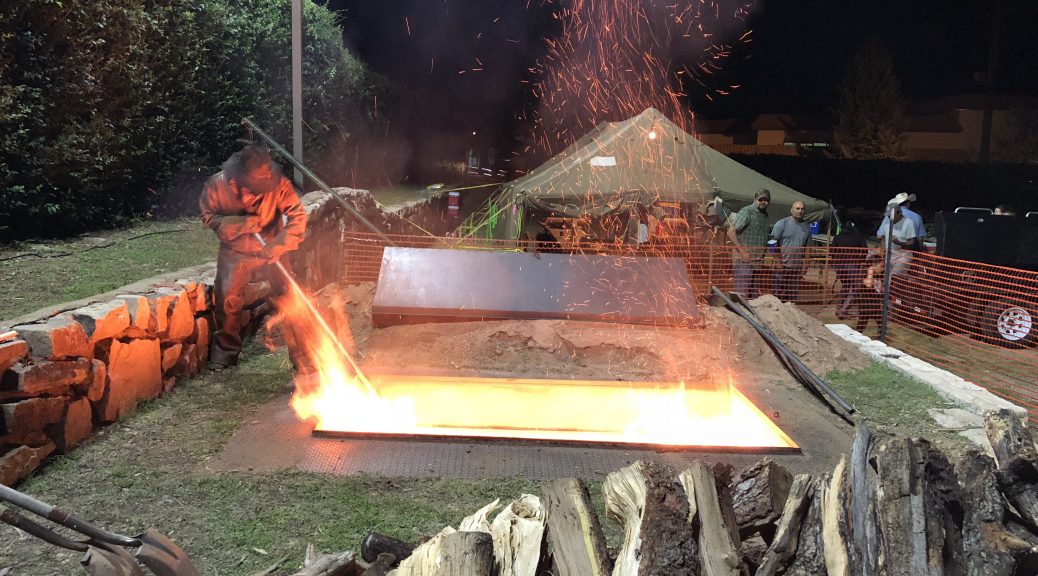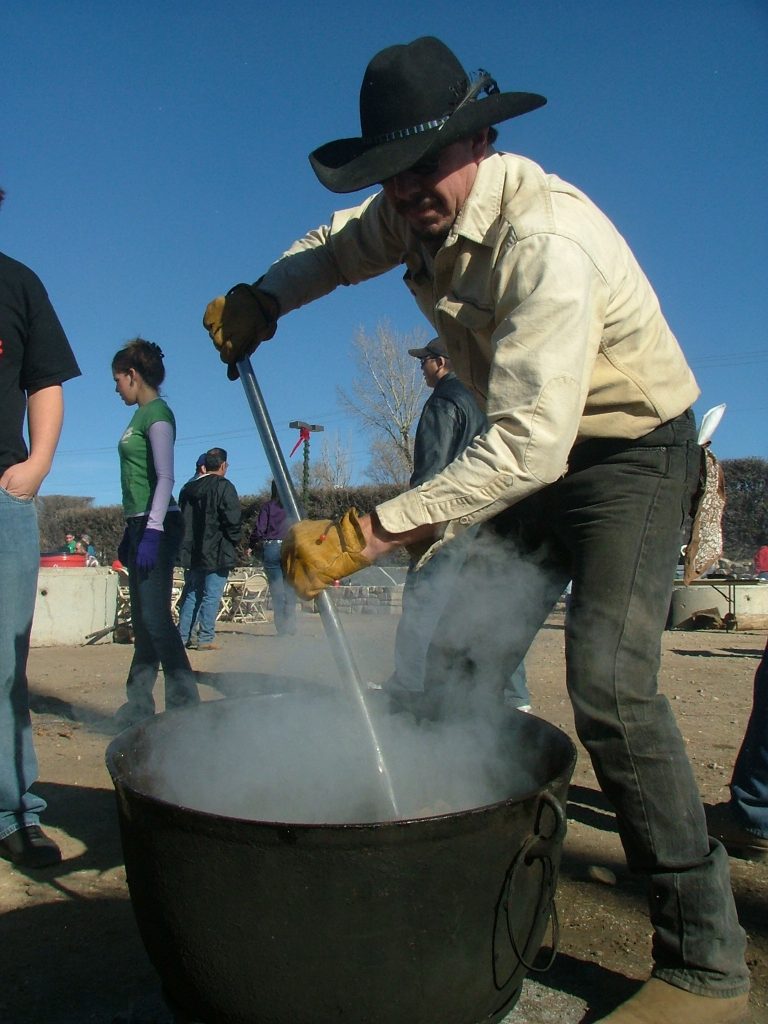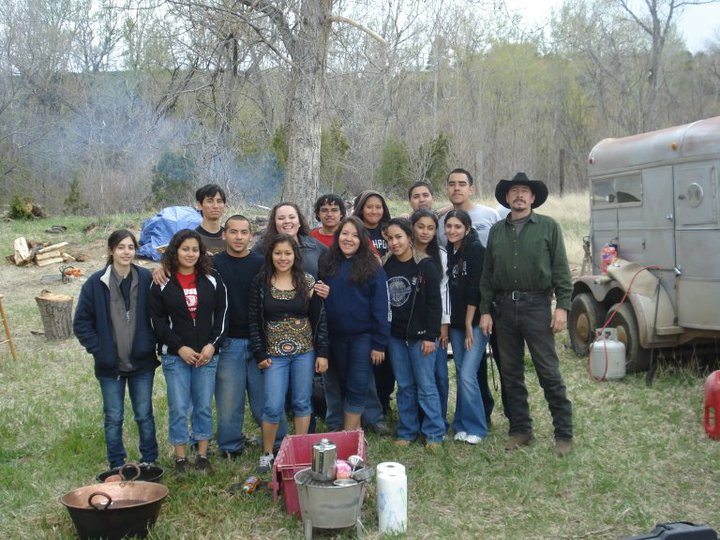
The Digital Matanza: An Introduction
The Manitos Project is fortunate to have a found an academic collaborator in the person of Dr. Eric Romero, Manito scholar, Professor of Languages and Culture and Director of Native American Hispanic Studies at New Mexico Highlands University. Born, as he would tell you, out of the Manitos earth of southern Colorado, Dr. Romero has woven the threads of a rigorous formal academic training with those of the lived practical knowledge of a someone who knows how to work the land.
Recently Dr. Romero and NMHU President, Dr. Sam Minner, began working together to bring the Matanza ( what might be called a pig roasting, a description that doesn’t even begin to tell the tale, as Dr. Romero will explain in a future post) as a cultural practice, onto the grounds of NMHU as part of the University’s desire to meaningfully expand its engagement with our regional cultures of place.
When COVID-19 disrupted those plans along with so many others, the Manitos Project and Dr. Romero explored remote solutions for honoring the underlying principles of Matanza, in a time when large public gatherings are not possible. A challenge enhanced by the visceral and inherently communal nature of the Matanza.
The concept of the Digital Matanza was born as a way to meaningfully explore the foodways and skillways that are the foundation of the Matanza. Resilient skillways that point towards a way out of dilemmas that face Manitos communities like the current food desert and other issues surrounding food sovereignty and cultural autonomy. Issues that Dr. Romero explores daily in his work at NMHU.
Over the course of the next several months, Dr. Romero will blog here with observations on foundational concepts and praxis of this Manitos knowledge that resides in the hands and write about some of the remote activities our collaboration undertakes in the meantime, leading up to what we hope is a real world Matanza at NMHU in the Fall. A feast to celebrate the resilience of Manitos culture even through times of great adversity.
In this first blog post, Dr. Romero formally introduces himself and his work.
Take it away Dr. Romero.

Photo: John Olivas
Southern Colorado and Northern New Mexico communities share an elaborate cultural history that demonstrates rich contributions from culturally diverse populations with behaviors and traditions that continue into the present. Our respective communities are nuanced with the vestiges of ancestral peoples, land-based behaviors and shared values. To truly, become part of a ranch, plaza, pueblo, or neighborhood suggests that an individual recognize and channel the stories of peoples that have shared the same space from prior generations. This form of land acknowledgement pays homage to the lived experiences of ancestors who shared the same landscape and behaviors as ourselves. The development of this “place attachment” or “place identity” is a lifelong process of recognition and personal insertion within the local landscape. As we grow and become members of diverse communities we continually add to our understanding of place. You do not completely anchor yourself, within a place, unless you recognize the stories that preceded your involvement.
For this reason, the Manitos Community Memory Project becomes a necessary endeavor to provide outlet for such storytelling and sharing. It is a timely and necessary project to remind us of the grandeur and longevity of our shared traditions and ongoing commitment to cultural continuity. This is occasion, for us, to share experience and layers of wisdom that are deeply inserted in our homes, communities, rivers, forests, acequias and mountains. Sometimes the story is simple, but, illuminating in the description of culture. It is easy to overlook the meaningful utterances that accompany our shared space, least we be intentional to search for those clarifying voices.
As social beings, we inherently are story tellers. Much of our daily and capillary conversations are personal accounts of where and how we navigate life. Much of the sacred sharing seated at the “resolana” wall are dedicated to personal experiences. A twenty-minute telephone conversation typically includes short and long versions of what you have enacted or witnessed. Common salutations of “como le va” or “que hubo” (Q-vo) are understood as sincere invitations to provide a story. Lately this sharing principle make take the form of photographs of luncheon choices or recreational pursuits posted on social media. By means of diverse outlets we care to share.
Personal story serves several purposes. Foremost, it evidences our enthusiasm for living. We make pleasurable the most mundane of activities and situations. We support each other with affirmations and complements as we tell of ourselves. We share knowledge of lifestyles and survival strategies. In the same anecdote, we demonstrate the values and cultural perspectives that guide our lives. Deep -rooted concepts of land -stewardship, cooperation, resiliency, gratitude, mutual respect, and spirituality are evidenced in our stories. To recognize the values of our heritage culture is to continue to build and strengthen a sense of community and sense of place. To the degree that we reiterate our cultural anchors the same that we contribute to our survival and sustainability as land-based culture. Our archived narratives of life and land anchor our existence, in a landscape, that will continue much after our personal episodes of action and appreciation.
I am personally invested in the Manitos project. I appreciate the efforts of Dr. Estevan Rael-Galvez, Mimi Roberts, Shane Flores, Dra. Patricia Trujillo and other designers to make this digital space available. It is invaluable not only as an archival project, but also as a medium for sharing precious cultural insights. As a Manito researcher, and as a community member, I personally commit to periodic submissions to this powerful network. I wish to further share from my own cultural background and professional interests. In particular, my interests lay in a deeper understanding of land-based cultural behavior.
Routine Manito practices of food preparation and preservation, domestic chores, family gatherings and many other daily events are indicative of historically founded values of land stewardship, cooperation, resilience and conviviality. Forthcoming posts will invite for further digital story sharing regarding cultural activities. Common activities such as wood gathering, pinon harvesting, gardening and cooking all express deep cultural knowledge. One such event is the “matanza”, framed as a community giveaway and celebration. Our sponsored “Digital Matanza” will demonstrate cultural and practical considerations for this infrequent celebration.
Respectfully submitted
Su servidor
Eric Romero Ph. D.

Photo: From the collection of Dr. Eric Romero
Featured Image: 2018 Highlands University Matanza, Photo: Jeff Salman
One thought on “The Digital Matanza: An Introduction”
This is an interesting topic and I thank you for sharing it. I have many cultural memories of the practical process of this event. Now it is mostly a social event and is losing its cultural aspects.
In my memory we used the phrase “Vamos a Desollar un marrano” starting early and by about 9:00am we were done, pelado y colgado. I learned later that to desollar is just removing the cuero.
For those of us from the north, there is the memory of hanging the pig “en la dispensa” or “en el soterrano (subterraño)”.
Of course it included burriñates and tripas fritas as an early morning reward for the early morning work after the chicarrones and tortillas.
In my travels through various countries I see that our frontier ancestors didn’t do as much in post-harvest processing often referred to by the french word “Charcuterie”. making sausage, ham, or beyond that, preserving special cuts of meat. My gramita did a version of something like “Confit”. Cooking meat, stuffing it into Mason jars and covering it with manteca and storing it in the “soterrano” for meals of tender meat throughout the year.
Que Hubo was a surprise for me. I have always heard it as “Quiebole”. As we revive and and share words we can strengthen our language. This means a lot to me and I hope to see more.
Thank you for helping keep these traditions alive. Help us expand our memory of the heritage of food-products and related processing in our rural frontier history, it has kept us alive.
Best wishes.